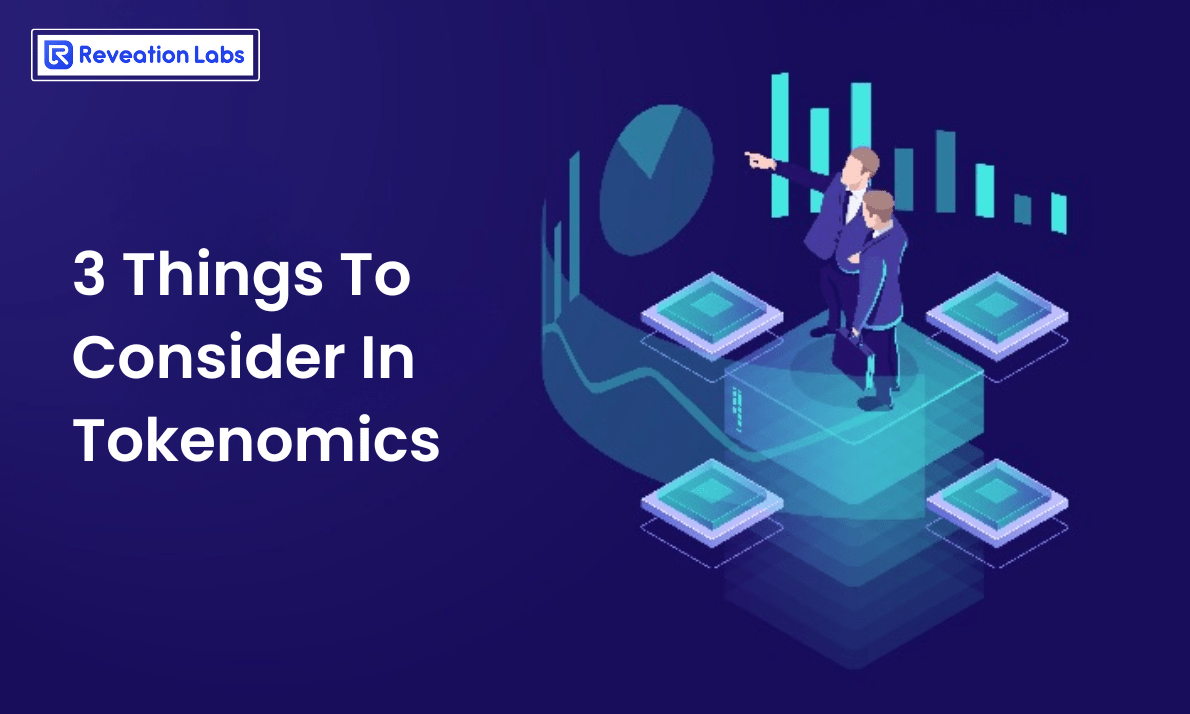3 Things To Consider In Tokenomics

Why Is Tokenomics Crypto Important?
Just as central banks use monetary policy about their respective fiat currencies, proper tokenomics design, management, and execution enable project teams to build an efficient economy around their solutions, facilitating the growth of the ecosystem and the token's price.
Tokenomics is an essential factor to consider for investors because it significantly influences the future price of a digital asset and whether the project can achieve the goals specified in its roadmap.
Simply put, regardless of the team's expertise and dedication, the concept's potential, or the amount of funding raised from early investors and venture capitalists, bad tokenomics will almost certainly lead to the failure of a crypto project.
What is the focus of tokenomics?
What is the critical factor to consider in Tokenomics?
Token Availability
Maximum supply, circulating supply, and total supply are the three types. The entire supply is the number of tokens in the cryptocurrency's lifetime. In contrast, the circulating supply is the number of tokens circulated on exchanges or held by the public. In some cases, the total supply does not equal the maximum supply, implying that tokens will continue to be minted until the total supply is reached.
As a result, it is generally preferred that cryptocurrencies have the same total and maximum supply so that no future tokens can be minted and the collection of the token does not increase, resulting in inflation. Looking at the token supply gives you a good idea of how many more tokens are likely to enter circulation and whether this will affect supply and demand.
Capitalization of the market
This is calculated by multiplying the token's current market price by the total number of tokens in circulation. This is an excellent predictor of a token's current and potential future value. For example, a token with a limited supply and a high market cap indicates that it is in high demand. However, there are two types of market capitalization: circulating market capitalization and fully diluted market capitalization.
The balance between them is critical because if the token becomes too scarce in the early days, it may cause high inflation in the future. Furthermore, people should look at Circulating Market Cap for the short term, while for a long time, they should look at Fully Diluted Market Cap. When calculating the market cap, it is prudent to consider both current and total supply, as an influx of supply could have an inverse effect on demand and result in hyperinflation.
Token Model
Is the token causing inflation or deflation? Inflationary tokens have an increased, sometimes uncapped, number of tokens that can be created, which may affect the token's value. In contrast, deflationary is the inverse and indicates potential value growth.
Case Studies
Do you believe the token's utility has a legitimate use case that will entice new users and future investment? It could be in traditional token utilities like farming, staking, or locking tokens to earn APY in tokens. APY should not be so high that it causes inflation, lowering the value of tokens, and it should not be so low that it does not incentivize investors.
These traditional utilities are helpful but need to be more sufficient. The token must also be used within the project ecosystem to have an actual use that can create buying pressure. For example, the token can pay fees in the project's marketplace.
The roadmap generally mentions the token's future utilities. These future utilities may be significant in the long run.
Ownership
Are the tokens distributed among a sufficient number of wallets? For example, if a single wallet or a small number of wallets hold the majority of the tokens, a whale could dump their tokens, causing the price to plummet unexpectedly.
Distribution of Tokens
Token Allocation distribution is critical because it affects the circulating supply of the token over time. To have less impact on circulating supply and, thus, the token price, projects must have a balanced token distribution. Team tokens, for example, are reserved for the team. The preference is for 10-15% with a high cliff and longer vesting because it motivates the team to work on the project long-term without significantly impacting circulating supply.
Vesting
Is there long-term vesting for the team and early investors from seed, private, or strategic rounds? This is necessary to ensure that the team and early backers are committed for the long term and are not causing excessive token inflation. It could have a lengthy vesting period or a lengthy cliff period. Both are desirable when combined.
We take tokenomics very seriously at Reveation Labs, and our developers dig deep into the whitepapers of projects we decide to work with for IGOs and INOs. They also provide strategic advice on tokenomics to projects in our Incubation program.
Conclusion
Designing crypto tokenomics is problematic because it necessitates a thorough understanding of blockchain technology, the various types of tokens, their minting processes, and distribution models. Understanding how project economics work, in general, is also beneficial.
The good news is that such professionals can be found here at Reveation Labs. Our blockchain consultants can assist you in developing smooth-as-butter tokenomics for your crypto project, or they can provide feedback on the tokenomics model designed by your team.
Comments
Post a Comment